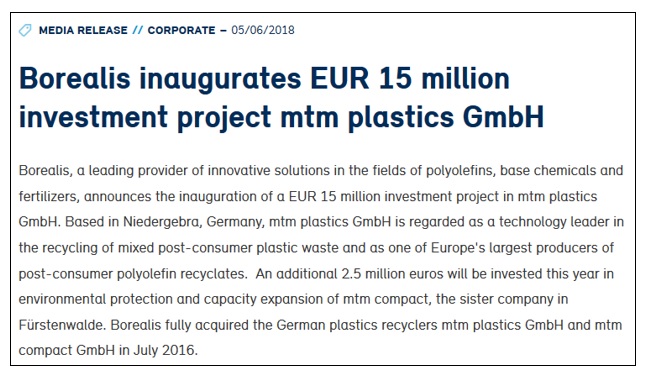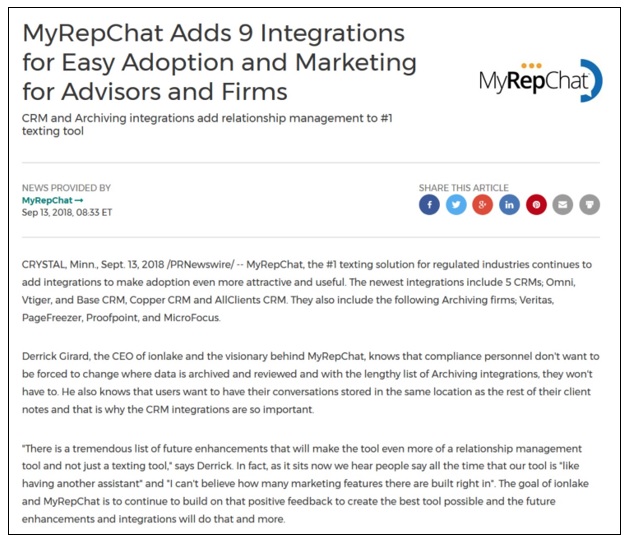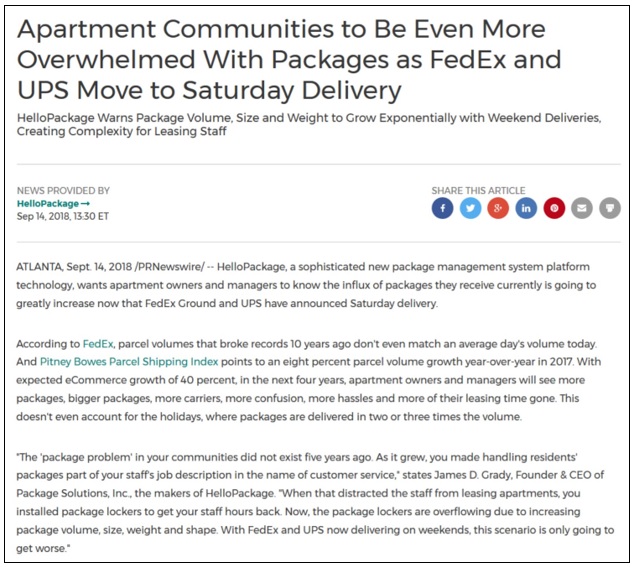-
As writers, we are always trying to make sure that our work reflects our clients’ unique and authentic personalities.
It’s important that the things we write do not sound “cookie cutter,” or too generic. At the same time, though, we want to make sure that our writing is relatable and entertaining.
But, how do we go about finding the right tone and voice for our writing? And how can we be sure that our tone and voice portray our clients in the way that they wish to be seen?
This great blog from Kuno Creative is a fantastic resource for finding the right tone and voice for your writing. It gives some great tips on how to decide how you want to be portrayed, and how to successfully achieve the appropriate tone and voice to fit your unique self.
Month: February 2019
Copywriter Q&A: RFP Survival, Success, and Lessons Learned with Shelly Spencer
TWFH team member Shelly Spencer has more than two decades of experience in RFP writing and has worked with up-and-coming organizations and non-profits with budgets of $30 million per year. One thing she’s learned? Although RFPs can vary greatly in terms of subject matter, industry, length, and format, the process of preparing a response is essentially the same across the board — and your chances of success really come down to a few key elements.
Shelly sat down with us recently and was gracious enough to answer some of our burning questions about surviving — and thriving — as you navigate the complicated process of crafting a killer proposal.
TWFH: How long have you been writing RFPs?
SS: I started out grant writing, and that morphed into RFPs as well. I got started mid-2000s; I’ve been doing this for almost 20 years. My RFP clients were pretty much all nonprofit, although I did some for-profit as well. I liked the idea of working with nonprofits. They’re in the business of helping people, helping the community, and doing good for the greater good.
TWFH: Is there a difference between writing RFPs for nonprofits, versus other types of businesses and organizations?
SS: They’re pretty much the same. All you have to do is follow the instructions. They are usually very specific in their instructions: They require one-inch margins, 12-point font. You have to put in this format in this order, you have to title it this way.
TWFH: What is the most challenging part of an RFP response?
SS: Some RFPs have a tendency to ask the same thing in different sections, so you find yourself trying to answer all of the questions, but not in a way that sounds like you’re repeating yourself. Getting creative with that can be a challenge.
Another challenge is that some RFPs ask for very specific, quantifiable results. They want to know your outcomes and outputs, and they want a very clear understanding of what you’re going to produce. Some organizations don’t always track those things; their programs can be hard to quantify. I have one RFP client who runs a food bank, and they started a community garden where women veterans volunteer and grow crops. It’s a great program, but we had to provide numbers; the pounds of crops produced, how many people are served, how many veterans work there. They want to do good, which is great — but you also have to focus on the numbers and details.
TWFH: What are some of the most common mistakes people make when responding to RFPs?
SS: Probably one of the biggest mistakes in responding to RFPs is bidding on a project that doesn’t fit. If you’re stretching beyond what is reasonable, it’s not worth it. RFPs take a lot of time, and it can be disappointing if you get to a place where you have to say, “We just don’t fit.” But you have to be realistic. I’ve seen some clients who try to “throw a program at money” and put something together willy-nilly to fit what the RFP is looking for. Rather than, “this is what we do,” it becomes, “let’s create a program because there’s money out there.”
TWFH: What is the most misunderstood part of the RFP process?
SS: The terminology can be challenging. The instructions are there — but if you don’t understand RFP terminology, it’ll be harder to follow those instructions. Also, some people don’t realize the extensive nature of RFPs. There’s the written part, but there are also attachments, budgets, collaboration letters — all of the extra stuff that’s not part of the actual writing process. It’s easy to just peruse the RFP and say, “This is a fit for us.” But then when you get into detail and read it, you realize that there are things involved beyond writing.
TWFH: RFP responses are a ton of work, with lots of people involved, multiple moving parts, etc. What advice do you have for staying organized during the process?
SS: In the beginning, make sure to figure out who is involved: Get everyone’s contact information and find out what role they play in the process. I usually start with a kickoff meeting to discuss the project scope. Then, I do a draft based on my research, and we build on that. I have the client review it and give their input: Am I on target? What do I need to change? What am I missing? I work through it from there.
TWFH: Do you have a standard “plan of attack” for RFPs?
SS: To me, the easiest way to start is by reading the RFP. Figure out what they need. Then, I start formatting. A lot of times, they want the RFP in this order, and they want you to use these specific headings, and so on. That becomes my outline, and I can start plugging in info. Also, when a client provides information, I copy and paste it into the appropriate section, and then I highlight it so I know that it’s their wording and needs to be rewritten.
TWFH: Do you typically use a template or have “boilerplate” copy that you can use from one RFP to another?
SS: I don’t see the point in reinventing the wheel. If you have a successful proposal already done, it can be to your benefit to re-use copy. I don’t mean that you have to use everything, and you don’t have to use it verbatim, but it can be more efficient to have those standard boilerplates.
Using boilerplates in RFPS helps ensure that you're always getting the same message out. It's like branding: You always want your RFP to have the same messaging, especially if you use more than one writer. Tweet this
TWFH: What do you think is the most important part of an RFP? Is there a “make or break” section?
SS: That depends on the RFP. Many RFPs will tell you exactly what to focus on. For example, if they have a 100-point scoring system, they might weight the “background” section at 10 points, but they might give 50 points to your “scope of work” section. They’re telling you what’s important to them, which sections carry the most bearing. Make those larger-pointed sections your main focus. Make those sections sparkle.
TWFH: Are there any RFPs you have won that you know for sure what about your response made the difference between winning or losing?
SS: In so many cases, it’s the whole proposal overall. Although I did once receive feedback that that my client’s proposal was one of the best because it didn’t have a lot of extra fluff. We looked at the questions, and we answered the questions. All it takes is being concise, clear and filled with a bunch of unnecessary stuff.
TWFH: In your opinion, what do successful RFPs have in common?
SS: They fit within what it is the RFP is trying to accomplish. They follow directions. They look as professional as possible. They pay attention to the little stuff that can be overlooked: H
Everything You Wanted To Know About Generating a Technobabble-Free Press Release But Were Afraid To Ask
Imagine yourself in the following situation: You’re the chief engineer of an up-and-coming technology company, and you’ve just led the launch of a ground-breaking systems control software package. You’re excited. You know your new product can meet a wider range of needs for industrial operators than competing solutions. You’ve published a detailed press release, and now you’re waiting to hear back from the tech press and trade publications.
And … crickets. Your big announcement does not seem to have drawn any attention or comments. You ask your team members to look into the matter, and they tell you sheepishly that only a handful of newspapers and blogs have taken note of your announcement. Moreover, they inform you that these outlets have either run the company’s statement in full or have condensed it into a brief blurb that uses exactly the same wording.
You’re disappointed – and not sure what to do next. You’re proud of your new product and confident that it can find an audience. So far, though, your audience seems to be yawning. What happened?
Perhaps you’ve fallen victim to technobabble.
That is, perhaps you – and your communications team — have spent enough time in the company of your fellow engineers, coders, systems architects, and other technical experts that you’re defaulting to the jargon you use with each other in the office. And as a result, the message you were trying to send out to potential buyers, not all of whom have the same level of familiarity with technical terms that you do, has been lost in a thicket of acronyms, abbreviations, and neologisms. Luckily, you aren’t alone. Many, many other companies have written press releases that are all but

This press release is a difficult read for several reasons:
- The headline, “Borealis inaugurates EUR 15 million investment project mtm plastics GmbH,” gives few details about the topic at hand.
- The first paragraph devotes more space to describing the companies involved than to explaining what exactly is happening.
- The text is heavily loaded with technical terms.
- Most of the results of an internet search for more information on the topic consist of articles that are slightly reworded versions of the press release.
Press Releases: Like Doing a Root Canal
But how much does it matter if your press release is a difficult read? And if technobabble is truly a problem, how can you avoid it in press releases? To answer these questions, The Writers For Hire spoke to Joel Alpert, the founder and strategic and creative director of MarketPower, an Atlanta-based branding and marketing consultancy.
Alpert, who worked for multiple weekly newspapers in the New York City market before moving into consulting, pointed out that press releases have their own problems even if they’re light on technobabble. “Most press releases are like doing a root canal,” he said. “They’re incredibly painful to listen to [or] to read. They’re terrible. They do the wrong things … Just in the course of [working in journalism], you learn to hate press releases.”
Journalists and editors are in a better position than most to critique public statements from businesses because they see so many of them, he explained. “Years ago in New York City, we certainly worked with press releases,” he said, referring to his past experience. “We got hundreds each week. You’d go through them; you’d throw most of them away. You’d edit them, and then you’d publish [them] in some form. When you do that often enough, you develop a sense of taste – of tolerance – for what you’re willing to put up with.”
Your takeaway here?
Journalists get a ton of releases, and many are poorly written. So make their job easier, and they’ll be more likely to pay attention to you. Tweet this
Telling Your Story
Unfortunately, the communication problem is not limited to interactions with the press. Companies that struggle to draw the attention of journalists and editors are also likely to have difficulty making a good impression on potential clients and customers. According to Alpert, the best way to avoid boring copy is to tell a story.
When telling that story, a strong start is crucial, he remarked. “The first thing to do is to make the story interesting. And it’s got to be enjoyable, preferably fun,” he added. “The lead has got to be very strong [and go] right into a story that really engages the reader. Otherwise, the reader will probably throw it away immediately.”
To achieve this aim, he said, companies may need to move beyond describing their newest products and services in a straightforward, just-the-facts-ma’am manner. Potential customers – even those who are looking for technological solutions to complex problems – may respond more positively to a different approach, he said.
“You might not tell a story about the brand or about the company,” he said. “[Instead], you can tell something that expands on your brand or your interests by telling something that’s interesting. It could be a customer experience. So while that doesn’t seem, at face value, to be about the brand, it really is because you’ve told about how a customer interacted with the brand.”
HelloPackage seems to be thinking along the same lines, if its press release dated September 14 is any indication.
The package management system platform’s statement succeeds on several fronts:
- The headline and first paragraph draw attention to an easily relatable problem – namely, that of keeping track of more and more packages thanks to the expansion of delivery options.
- The second paragraph provides data to support the company’s argument without leaving readers to drown in a sea of numbers.
- The overall tone is collegial and engaging – and non-technical, despite the technical nature of the product.
- The statement explains clearly how the company can help resolve a real-world problem.
If Borealis had taken this approach, the first paragraph of its press release might have read as follows: “For both manufacturers and consumers, plastics are cheap and convenient. They are also disposable – and piling up around the world, creating environmental hazards. Borealis, a leading provider of innovative solutions in the chemical industry, is contributing to clean-up efforts through the expansion of a plastics recycling facility in Niedergebra, Germany.”
The Eyes Have It
Hitting these high notes may seem like a tall order for companies involved in complex, high-tech operations. But there are concrete ways to optimize the content of press releases to help them reach laymen and experts alike, Alpert told The Writers For Hire.
One technique is to keep press releases and other marketing materials brief, he said. “Keep it short because if you’ve got something that can be told more [succinctly], you’re getting that story published the way you want to have it, [rather] than getting it sliced to bits because someone feels like they have to take a pen or cursor to it,” he said.
Another helpful strategy is to seek out striking imagery, he said. “There’s something you can do that really helps a lot, and that is [to be] visual,” he said. “Instead of saying something like ‘we’re growing quickly,’ you say ‘we’re growing in leaps and bounds.’ If that happens to [catch the reader’s eye], it’s a little more visual.”
Even companies involved in heavily technical projects should make use of striking imagery, Alpert asserted. “Everything has an angle that can be made interesting,” he said. “I worked for a client in insurance compliance consulting, which is pretty dry stuff. And we had a whole theme of getting through the jungle of insurance compliance that was very visual, with all kinds of illustrations about escaping from the paper tiger in the jungle and cutting through the jungle with machetes. Everything became a way of cutting through the bureaucratic clutter that this industry is known for, and we made that interesting. And this particular client’s business started growing radically once we started doing this kind of stuff because it has a way of gaining the attention and interest of the target audience.”
He continued: “[Something] that’s more engaging and more entertaining and more interesting will gain the attention of your audience – wherever it is, every single time, no exceptions. There’s no industry that can’t create some interesting thinking or analogy.”
Borealis would probably have benefited from this approach. For example, the German company could have tweaked its statement to include a more evocative headline, such as “Borealis to scoop up more litter with EUR 15 million push to expand plastics recycling facility.”
Likewise, with a few modifications to the original text, it could have offered a clear and succinct explanation of its investment program. More specifically, it could have used the following as its second paragraph: “The company is set to spend EUR 15 million on the expansion of a plastics recycling facility that it acquired through the acquisition of another German firm, mtm plastics GmbH, in 2016. The project aims to boost the capacity of the plant, which is located in Niedergebra, Germany, while also improving its ability to navigate the high-end market of plastic re-granulates.”
Maintaining Credibility
When reworked in this fashion, press releases can do a better job of capturing readers’ interest. But if the topic at hand is technical in nature, will an overhaul really do justice to it?
According to Alpert, avoiding technobabble doesn’t have to entail a loss of credibility. “Sometimes a company has something that’s highly technical and it’s a big innovation, and you have to explain to [readers] why this big innovation has value,” he said. “That can and should be able to be done. That can also be made interesting and engaging.”
He explained: “Sometimes in the cases of a technical product, you can be a little more technical in what you do because you want to gain some credibility … [Your press release] may be seen by a CFO as well as a CTO, or it may be seen by a programmer or someone in customer service, and [those] audiences are really different. They have different tolerances for what they want to read.”
Even so, he said, the desire to cater to expert readers is no excuse for a badly crafted press release. “No matter who it is, even if they have a technical background, they still want to be able to read it like a normal sentence and not [have it] sound like they’re sitting in a science class looking at the periodic table of elements,” he commented.
This target is not out of reach, as the organizers of a technology conference in Wuxi, China can demonstrate.

In this press release, the Organizing Committee of 2018 World Internet of Things Expo has accomplished several important goals:
- In the headline and first paragraph, it uses evocative phrases such as “pivotal leap,” “great breakthrough” and “years of cultivation.”
- It presents readers with a striking visual image by referring to the event as the “pearl” of Wuxi.
- The statement explains how consumers can benefit from the technologies showcased at the event.
- It references new technological developments without taking refuge in technobabble.
Borealis would have done well to adopt a similar approach. For example, it could have played up the positive environmental impact of its plans by playing up the theme of cleaning up litter along the following lines: “The expansion project will add value to mtm plastics GmbH, which is already in the vanguard of efforts to recycle items that might otherwise be sent to landfills, including mixed post-consumer plastic waste and as one of Europe’s largest producers of post-consumer polyolefin recyclates.”
Cross-Fertilization
In any event, companies should certainly aim to stand out, given that media markets have changed so much over the last two decades. “I don’t think it’s a secret to say that press releases have been fighting for their survival for years,” Alpert said. “In electronic media, there are so many places to go for information, and social media tends to dominate over press releases. So press releases are not as popular as they used to be.”
Even so, companies can attain the best of both worlds by writing press releases that bear more resemblance to social media posts. Alpert explained: “A press release tends to have a more corporate style, and social media tends to be more conversational. I would argue that press releases should be more conversational, or if not conversational, then minimally they should be engaging and absolutely interesting and readable.”
The press release mentioned above serves as a good example of this informal approach. In similar fashion, this September 13 statement from MyRepChat strikes a friendly note:

Instead of listing the software’s technical features at length, it uses brief summaries and quotes from its CEO to highlight the ways that the software helps its users.
By contrast, Borealis uses a quote from its acting CEO that comes across as plodding and overloaded with buzzwords: “This investment in our mechanical recycling capabilities at mtm is key in realising our growth ambitions in the circular economy, and it underlines our continuing commitment to mtm. We need stepwise expansion projects to minimize down time, but also need to maintain existing facilities and business.” The company might have done better to preface this statement with something more descriptive, such as: “Borealis’ acting CEO Alfred Stern emphasized his company’s dedication to expanding its activities in the area of plastics recycling – and doing so without forcing mtm plastics GmbH to take a break from the important business of responsible handling of post-consumer waste.”
Content Management
In short, according to Alpert, avoidance (or judicious use) of technobabble is valuable for any company looking to bolster its bottom line. Clear communication “absolutely leads to sales,” he said. “That’s why we have so much marketing communication [and] so much chatter across every imaginable medium, from email and Twitter and Facebook on your phone to electronic billboards and ads in elevators.”
As noted here, good writing skills are a crucial part of the solution, especially for companies involved in complex and technical industries that are not easy to describe to laymen. But they do not have to be the only tool in use. Indeed, technology – in the form of content management systems (CMSs) – can play a role.
CMSs are software packages or apps that allow their users to collect, store, manage, and publish information, including text, graphics, and other materials. As companies accumulate collections of press releases and other public statements, they can use CMSs as an archive that stores older material: as a smart index that tags text and graphics so that they can be used in the most effective context, as a template that generates new material and calibrates it to specific audiences, as a sounding board that allows staff members to update and comment on press releases and other public statements, and as a publishing solution that formats material attractively.
Pimcore, a German open-source software vendor, has pointed out that these systems help companies access the technological resources needed to streamline the process of composing and releasing marketing materials: “You don’t need to know HTML or any other programming language to build a website using a CMS. All you really need to know is how to use Microsoft Word and you will be able to create (using) your CMS to create web pages, blog posts, news articles, landing pages, and press releases.” (hyperlink to https://pimcore.com/en/resources/blog/why-you-should-be-using-a-content-management-system-cms_a981)
In other words, CMSs can be a helpful complement to good writing skills. They can streamline the process of drafting press releases by helping companies to draw on their most successful marketing campaigns and statements of the past. Through tagging, they can help companies tailor their press releases to different audiences with different tolerances for technical information, while ensuring that the final product is well formatted and visually appealing.




